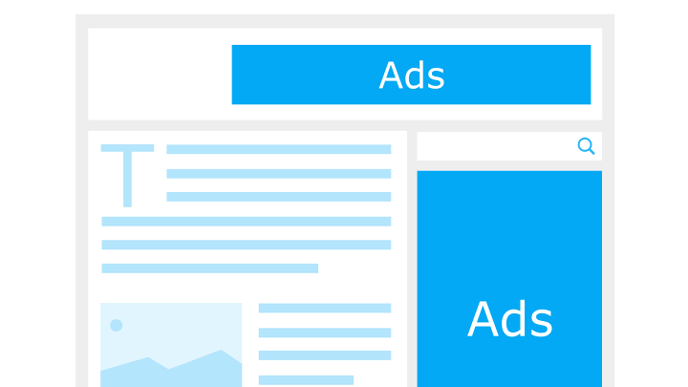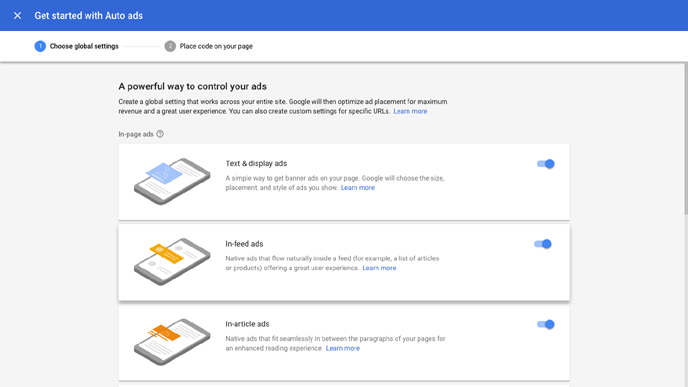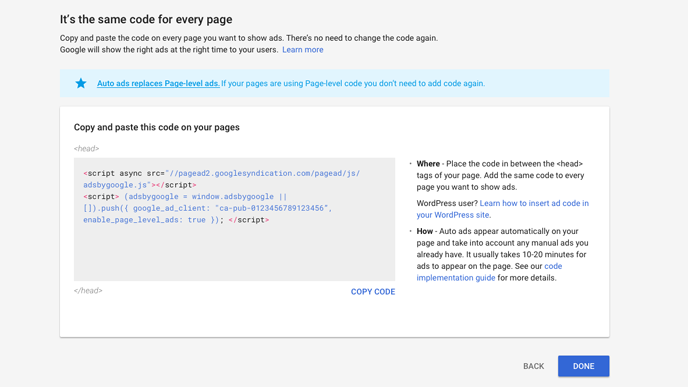These days, you won’t find any Google AdSense ads anywhere on John Chow dot Com. This wasn’t always the case. When John decided to embark on this “make money online” journey and experiment with whether it was possible to make a full-time income from part-time blogging, AdSense was very much a part of the revenue mix. You can search through the archives for the monthly income reports he used to post and you’ll find that he did make some money from Google this way.
The Google Ad Experience
He doesn’t implement any ad placements from Google AdSense anymore, because why would he want to redirect a reader away from the site in exchange for a few cents when he can collect novelty checks for over $3 million in Las Vegas instead. It’s a no brainer at this point. Even so, AdSense is still very much a part of the monetization strategy for an overwhelming number of bloggers and site owners, myself included.

If you’re a long time reader of this blog, then you might remember more than ten years ago when John said that if you “live by the Google,” you can only expect to “die by the Google.” That’s true whether you’re trying to game the algorithm for better search engine rankings or if you rely on AdSense as your primary source of income. It doesn’t take much for Google to pull the rug out from under you, like how they did with the YouTube Partner Program in January 2018.
But until you can get to a level where you can consistently rake in the bigger bucks through affiliate marketing or private brand deals, no one is going to fault you for utilizing AdSense as part of your blog monetization mix. After all, you should be shooting to have multiple sources of income in case any of them disappears on you overnight. And you should also stay on top of the latest tools and features that these networks provide you.
What Is AdSense Auto?
In February 2018, Google introduced something that it calls AdSense Auto ads. When you consider the “traditional” way of implementing AdSense on your site, you go and customize the banner or whatever else on the AdSense website, you grab the ad code, and then you paste it into wherever it is that you want the ad to appear on your website. Maybe you use a WordPress plugin or maybe you edit your theme directly. That’s up to you and your comfort level.

Google AdSense Auto ads are different. Instead of getting you to guess and experiment about which ad types are best placed in what locations on your site, this feature uses “machine learning to make smart placement and monetization decisions on your behalf, saving you time.” Instead of copying and pasting ad code in all the different places you want the AdSense blocks to appear, you simply “place one piece of code just once to all of your pages, and let Google take care of the rest.”

They proudly proclaim that some of the benefits of using Auto ads include optimization by way of machine learning, improved revenue opportunities by identifying available ad space, and the relative ease of use because you don’t need to change the code to get new ads. Just “turn them on and off with the flick of a switch.”
If you’ve been using any number of Google products in recent years — like Android devices, Google Photos, Google Calendar and so on — then you’ll know that the company has been remarkably successful in its implementation of machine learning. Google Photos can reliably group together related images. It can make animated GIFs and albums. It can identify pictures that have the same person in it. Auto ads offers this same kind of potential and promise for an easier experience.
Live By the Google…
The feature and service actually soft launched as a limited beta back in September 2017, but Google rolled it out to all AdSense publishers in February 2018. During the beta, Google says that users experienced revenue boosts of about 5 to 15% on average. That sounds positive, for the most part, but it is going to be very much a double-edged sword.
As intelligent as machine learning has become in recent years, it’s hardly perfect. While there is certainly a lot of automation already involved in “traditional” AdSense blocks, you still have total control over their actual placement on your site. If you enable AdSense Auto ads, then it’s well within the realm of reason that the automatic ad placements could “break” the look of your blog’s theme for some users. Or it might just look bad.
That wouldn’t necessarily be the end of the world normally, but the bigger problem here is that you’d never know it. That’s because you can’t possibly see every possible iteration that AdSense Auto is implementing on your site; you can only see how it’s being shown to you. You can try proxies and VPNs and other services to see how your site looks for different locations and in different browsers, but it’ll inherently be incomplete.
Is that worth about a 10% boost in monthly revenue? I’ll let you decide that for yourself, but as always, remember this: if you live by the Google, you’ll die by the Google.
